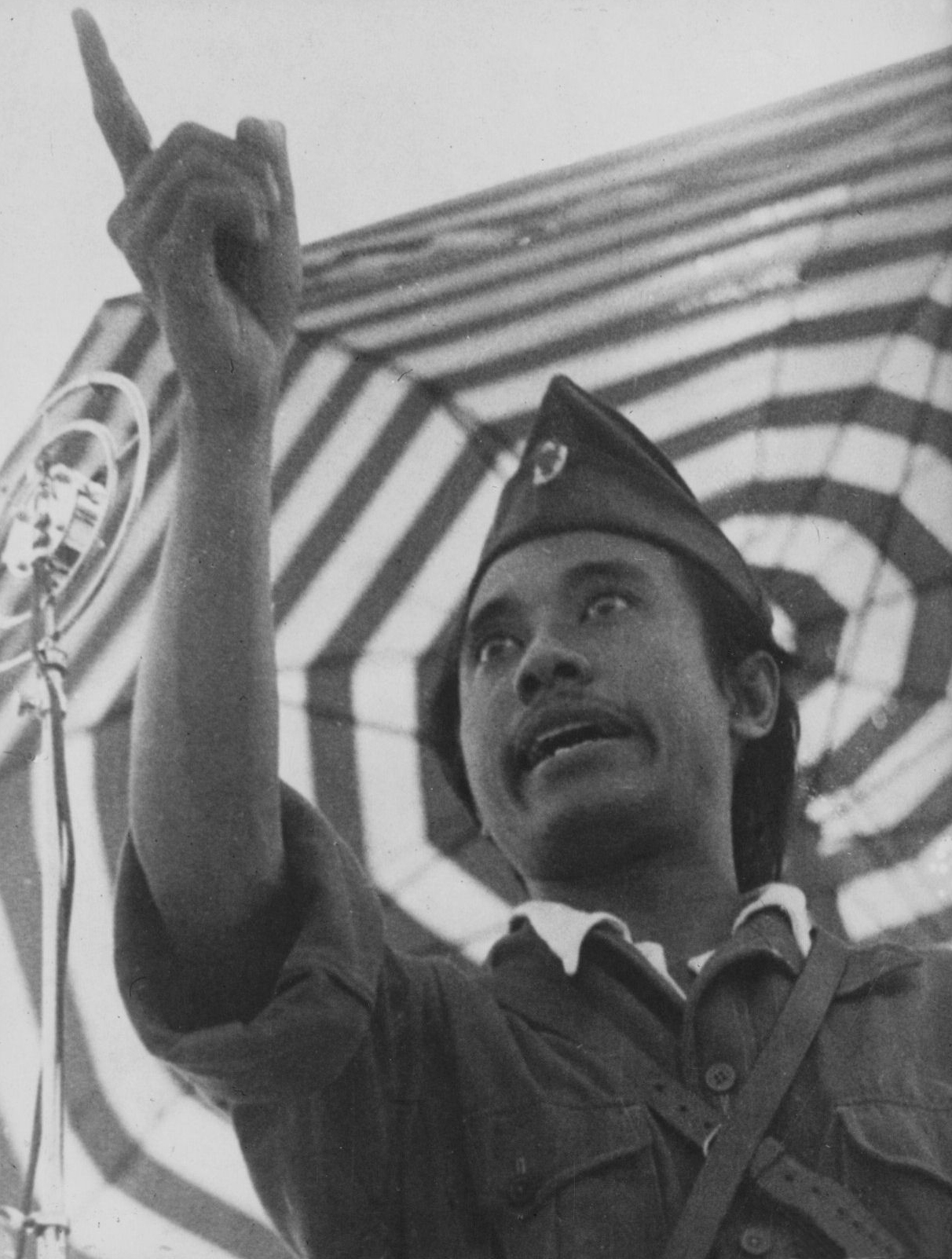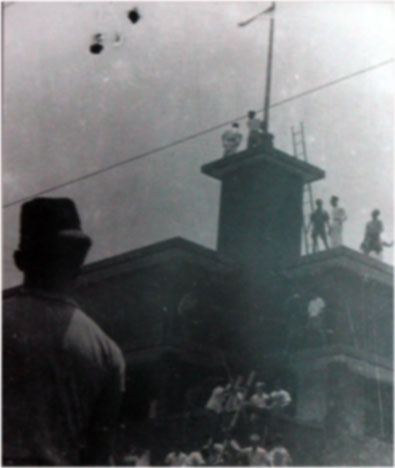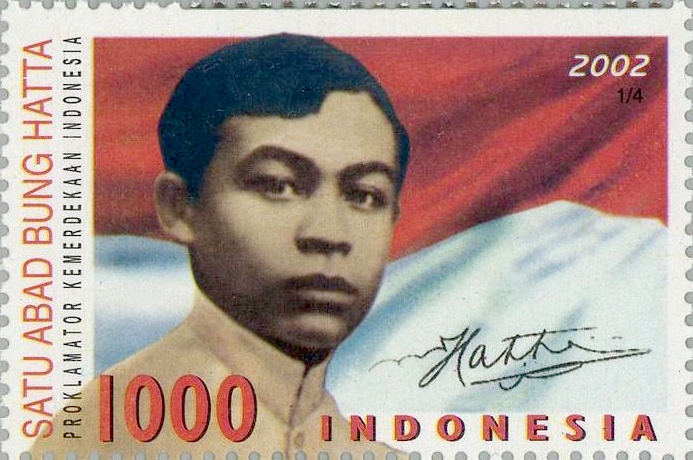|
Battle Of Surabaya
The Battle of Surabaya was fought between regular infantry and militia of the Indonesian nationalist movement and British and British Indian troops as a part of the Indonesian National Revolution against the re-imposition of Dutch colonial rule. The peak of the battle was in November 1945. The battle was the largest single battle of the revolution and became a national symbol of Indonesian resistance. Considered a heroic effort by Indonesians, the battle helped galvanise Indonesian and international support for Indonesian independence. 10 November is celebrated annually as Heroes' Day (). By the time the Allied forces arrived at the end of October 1945, the ''Pemuda'' ("youth") foothold in Surabaya City was described as "a strong unified fortress". Fighting broke out on 30 October after the British commander, Brigadier A. W. S. Mallaby was killed in a skirmish. The British retaliated with a co-ordinated sweep that began on 10 November, under the cover of air attacks. Althou ... [...More Info...] [...Related Items...] OR: [Wikipedia] [Google] [Baidu] |
Indonesian National Revolution
The Indonesian National Revolution, or the Indonesian War of Independence, was an armed conflict and diplomatic struggle between the Republic of Indonesia and the Dutch Empire and an internal social revolution during Aftermath of WWII, postwar and Dutch East Indies#World War II and independence, postcolonial Indonesia. It took place between Indonesian Declaration of Independence, Indonesia's declaration of independence in 1945 and the Netherlands' Dutch–Indonesian Round Table Conference, transfer of sovereignty over the Dutch East Indies to the Republic of the United States of Indonesia at the end of 1949. The four-year struggle involved sporadic but bloody armed conflict, internal Indonesian political and communal upheavals, and two major international diplomatic interventions. Dutch military forces (and, for a while, the forces of the World War II Allies, World War II allies) were able to control the major towns, cities and industrial assets in Republican heartlands on Ja ... [...More Info...] [...Related Items...] OR: [Wikipedia] [Google] [Baidu] |
5th Infantry Division (India)
The 5th Indian Infantry Division was an infantry division of the Indian Army during World War II that fought in several theatres of war and was nicknamed the "Ball of Fire". It was one of the few Allied divisions to fight against three different armies - the Italian, German and Japanese armies. The division was raised in 1939 in Secunderabad with two brigades under command. In 1940, the 5th Indian Division moved to Sudan and took under command three British infantry battalions stationed there and was reorganised into three brigades of three battalions each. The division fought in the East African Campaign in Eritrea and Ethiopia during 1940 and 1941, thence moving to Egypt, Cyprus and Iraq. In 1942, the division was heavily engaged in the Western Desert Campaign and the First Battle of El Alamein. From late 1943 to the Japanese surrender in August 1945, it fought continuously from India through the length of Burma. After the end of the war, it was the first unit into Singapo ... [...More Info...] [...Related Items...] OR: [Wikipedia] [Google] [Baidu] |
Hotel Majapahit
The Hotel Majapahit is a historic hotel in Surabaya, East Java, Indonesia, opened in 1911. The hotel is currently managed by Accor through its MGallery chain. History The hotel was founded in 1910 as the Hotel Oranje by Lucas Martin Sarkies, the son of Martin Sarkies of the Sarkies brothers, who commissioned Regent Alfred John Bidwell to design the hotel. It opened in 1911. Two wings were added from 1923 to 1926 and an Art Deco lobby extension was opened in 1930. The opening was celebrated with a royal party attended by Crown Prince Leopold III from Belgium, Princess Astrid from Sweden and Charlie Chaplin. During the WWII Japanese occupation of Indonesia from 1942 to 1945, the hotel was renamed Hotel Yamato. It was used as the headquarters of the Japanese forces in East Java. The hotel was the site of the famous "Hotel Yamato Incident" on 19 September 1945 when pro-nationalist Indonesian youth revolutionaries tore away the blue portion of the Dutch flag flown above the hotel ... [...More Info...] [...Related Items...] OR: [Wikipedia] [Google] [Baidu] |
Dutch Flag
The national flag of the Netherlands ( nl, de Nederlandse vlag) is a horizontal tricolour of red, white, and blue. The current design originates as a variant of the late 16th century orange-white-blue '' Prinsenvlag'' ("Prince's Flag"), evolving in the early 17th century as the red-white-blue ''Statenvlag'' ("States Flag"), the naval flag of the States-General of the Dutch Republic, making the Dutch flag perhaps the oldest tricolour flag in continuous use.As a flag that symbolises the transformation from monarchy to republic, it has inspired both the derivative Russian flag, and after the French Revolution in 1789 the vertically striped French tricolour, both flags in turn influenced many other tricolours. During the economic crisis of the 1930s, the old Prince's Flag with the colour orange gained some popularity among some people. To end the confusion, the colours red, white and blue and its official status as the national flag of the Kingdom of the Netherlands were reaffirme ... [...More Info...] [...Related Items...] OR: [Wikipedia] [Google] [Baidu] |
Victory Over Japan Day
Victory over Japan Day (also known as V-J Day, Victory in the Pacific Day, or V-P Day) is the day on which Imperial Japan surrendered in World War II, in effect bringing the war to an end. The term has been applied to both of the days on which the initial announcement of Japan's surrender was made – 15 August 1945, in Japan, and because of time zone differences, 14 August 1945 (when it was announced in the United States and the rest of the Americas and Eastern Pacific Islands) – as well as to 2 September 1945, when the surrender document was signed, officially ending World War II. 15 August is the official V-J Day for the United Kingdom, while the official US commemoration is 2 September. The name, V-J Day, had been selected by the Allies after they named V-E Day for the victory in Europe. On 2 September 1945, formal surrender occurred aboard the battleship USS ''Missouri'' in Tokyo Bay. In Japan, 15 August usually is known as the ; the official name for the day, h ... [...More Info...] [...Related Items...] OR: [Wikipedia] [Google] [Baidu] |
Jakarta
Jakarta (; , bew, Jakarte), officially the Special Capital Region of Jakarta ( id, Daerah Khusus Ibukota Jakarta) is the capital and largest city of Indonesia. Lying on the northwest coast of Java, the world's most populous island, Jakarta is the largest city in Southeast Asia and serves as the diplomatic capital of ASEAN. The city is the economic, cultural, and political centre of Indonesia. It possesses a province-level status and has a population of 10,609,681 as of mid 2021.Badan Pusat Statistik, Jakarta, 2022. Although Jakarta extends over only , and thus has the smallest area of any Indonesian province, its metropolitan area covers , which includes the satellite cities Bogor, Depok, Tangerang, South Tangerang, and Bekasi, and has an estimated population of 35 million , making it the largest urban area in Indonesia and the second-largest in the world (after Tokyo). Jakarta ranks first among the Indonesian provinces in human development index. Jakarta's busin ... [...More Info...] [...Related Items...] OR: [Wikipedia] [Google] [Baidu] |
Indonesian Declaration Of Independence
The Proclamation of Indonesian Independence ( id, Proklamasi Kemerdekaan Indonesia, or simply ''Proklamasi'') was read at 10:00 on Friday, 17 August 1945 in Jakarta. The declaration marked the start of the diplomatic and armed resistance of the Indonesian National Revolution, fighting against the forces of the Netherlands and pro-Dutch civilians, until the latter officially acknowledged Indonesia's independence in 1949. The document was signed by Sukarno (who signed his name "Soekarno" using the Van Ophuijsen orthography) and Mohammad Hatta, who were appointed president and vice-president respectively the following day. The date of the Proclamation of Indonesian Independence was made a public holiday by a government decree issued on 18 June 1946. Background The beginnings of the independence movement In 1918, the Dutch authorities in the Dutch East Indies established a partly-elected People's Council, the ''Volksraad'', which for the first time gave Indonesian nationalists ... [...More Info...] [...Related Items...] OR: [Wikipedia] [Google] [Baidu] |
Mohammad Hatta
Mohammad Hatta (; 12 August 1902 – 14 March 1980) was an Indonesian statesman and nationalist who served as the country's first vice president. Known as "The Proclamator", he and a number of Indonesians, including the first president of Indonesia, Soekarno, fought for the independence of Indonesia from the Dutch. Hatta was born in Fort de Kock, Dutch East Indies (now Bukittinggi, Indonesia). After his early education, he studied in Dutch schools in the Dutch East Indies and studied in the Netherlands from 1921 until 1932. Early life, family, and early education Early life and family Hatta was born in Fort De Kock (now known as Bukittinggi) on 12 August 1902 into a prominent and strongly Islamic family. His grandfather, Sheikh Abdurrahman, was a respected Naqshbandi-Khalidi murshid in Batuhampar, near Payakumbuh. His father, Haji Mohammad Djamil, died when he was eight months old and he was left with his six sisters and his mother. As in the matrilineal society of Minangka ... [...More Info...] [...Related Items...] OR: [Wikipedia] [Google] [Baidu] |
Sukarno
Sukarno). (; born Koesno Sosrodihardjo, ; 6 June 1901 – 21 June 1970) was an Indonesian statesman, orator, revolutionary, and nationalist who was the first president of Indonesia, serving from 1945 to 1967. Sukarno was the leader of the Indonesian struggle for independence from the Dutch colonialists. He was a prominent leader of Indonesia's nationalist movement during the colonial period and spent over a decade under Dutch detention until released by the invading Japanese forces in World War II. Sukarno and his fellow nationalists collaborated to garner support for the Japanese war effort from the population, in exchange for Japanese aid in spreading nationalist ideas. Upon Japanese surrender, Sukarno and Mohammad Hatta declared Indonesian independence on 17 August 1945, and Sukarno was appointed president. He led the Indonesian resistance to Dutch re-colonisation efforts via diplomatic and military means until the Dutch recognition of Indonesian independence ... [...More Info...] [...Related Items...] OR: [Wikipedia] [Google] [Baidu] |
Skirmish
Skirmishers are light infantry or light cavalry soldiers deployed as a vanguard, flank guard or rearguard to screen a tactical position or a larger body of friendly troops from enemy advances. They are usually deployed in a skirmish line, an irregular open formation that is much more spread out in depth and in breadth than a traditional line formation. Their purpose is to harass the enemy by engaging them in only light or sporadic combat to delay their movement, disrupt their attack, or weaken their morale. Such tactics are collectively called skirmishing. A battle with only light, relatively indecisive combat is often called a skirmish even if heavier troops are sometimes involved. Skirmishers can be either regular army units that are temporarily detached to perform skirmishing or specialty units that are specifically armed and trained for such low-level irregular warfare tactics. Light infantry, light cavalry, and irregular units often specialize in skirmishing. Skirmishers ... [...More Info...] [...Related Items...] OR: [Wikipedia] [Google] [Baidu] |
Hari Pahlawan
Heroes' Day or National Heroes' Day may refer to a number of commemorations of national heroes in different countries and territories. It is often held on the birthday of a national hero or heroine, or the anniversary of their great deeds that made them heroes. Angola National Heroes Day in Angola is a holiday in Angola on 17 September, the birthday of the national hero Agostinho Neto. Bahamas National Heroes Day in the Bahamas has been a public holiday since 2013. It replaced Discovery Day, which celebrated the arrival of Christopher Columbus to the Americas. Barbados National Heroes' Day is a public holiday in Barbados on April 28, honoring the eleven national heroes of Barbados. Bermuda National Heroes' Day has been an official holiday in Bermuda since 2008, when the centre-left government declared it would replace the Queen's Official Birthday marked in June. Over 2,000 residents signed a petition in protest calling to retain the Queen's Birthday holiday. Initially obse ... [...More Info...] [...Related Items...] OR: [Wikipedia] [Google] [Baidu] |
Dutch East Indies
The Dutch East Indies, also known as the Netherlands East Indies ( nl, Nederlands(ch)-Indië; ), was a Dutch colony consisting of what is now Indonesia. It was formed from the nationalised trading posts of the Dutch East India Company, which came under the administration of the Dutch government in 1800. During the 19th century, the Dutch possessions and hegemony expanded, reaching the greatest territorial extent in the early 20th century. The Dutch East Indies was one of the most valuable colonies under European rule, and contributed to Dutch global prominence in spice and cash crop trade in the 19th to early 20th centuries. The colonial social order was based on rigid racial and social structures with a Dutch elite living separate from but linked to their native subjects. The term ''Indonesia'' came into use for the geographical location after 1880. In the early 20th century, local intellectuals began developing the concept of Indonesia as a nation state, and set the stage ... [...More Info...] [...Related Items...] OR: [Wikipedia] [Google] [Baidu] |









